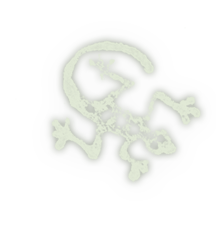TubB Canyon Desert Conservancy
Where is Tubb Canyon Bajada and what
makes it special?
The great Southwestern Sonoran Desert of North America extends from central and southern Arizona southward into northern Sonora and the Baja California peninsula of Mexico, and westward into the Anza-Borrego Desert of southeastern California. It is in southeastern California that the Anza-Borrego Desert, part of the driest Colorado Desert subdivision, comes to its far western end, terminating in the higher elevations of the Peninsular Range mountains. It is in this geologically active transition zone between foothills and desert that Tubb Canyon and its biodiverse, boulder strewn hills and ocotillo-covered bajada exist. Tubb Canyon Bajada is located at the confluence of Tubb, Culp, Dry and Loki Canyons where predominantly granitic sediments have accumulated to form a vegetated bajada fed by surface and underground water from higher elevations.
The Peninsular Range prevents most of the moisture that evaporates off the ocean to the west from reaching the Anza-Borrego Desert. However, mountain springs, streams, and rain clouds that barely extend over Tubb Canyon Bajada provide higher amounts of water to canyon outflows and desert arroyos than is found farther east in the deep desert and badlands. As a result, vegetation is more lush on the bajada, including ironwood and palo verde trees, mesquite, and ancient forests of ocotillos near the base foothills and mouths of local canyons.
This region is home to several rare and endangered species, including Peninsular Bighorn Sheep as well as numerous other desert and foothill plants and animals. The transition zone between Sonoran Desert and foothill chaparral supports great biodiversity. Certain species hybridize in this transitional corridor where vegetation types overlap, such as the desert Gambel's Quail that can interbreed with its close relative, the California Quail... or the Desert Horned Lizard that sometimes hybridizes with its cousin, the Flat-tailed Horned Lizard. These "intergrade" populations are unique and potentially future species in the making.
The slightly wetter transition habitat on Tubb Canyon Bajada also encompasses the westernmost complex of Sonoran desert sand dunes, home to numerous lizard species and an attractive hunting ground for a resident population of Burrowing Owls. The entire region attracts a variety of migrating birds to its water sources and rich vegetation, including several species of hummingbirds, Swainson's Hawks, and orioles. Bats roost within local cliff cracks and small caves, flying out at night to feed on insects around springs and seasonal water sources. The full spectrum of species living within the region has not been fully documented and merits further study.
